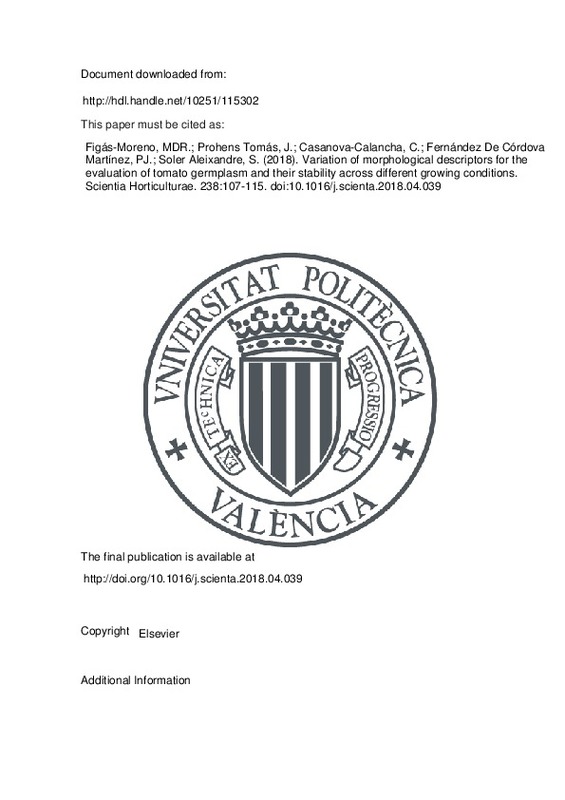JavaScript is disabled for your browser. Some features of this site may not work without it.
Buscar en RiuNet
Listar
Mi cuenta
Estadísticas
Ayuda RiuNet
Admin. UPV
Variation of morphological descriptors for the evaluation of tomato germplasm and their stability across different growing conditions
Mostrar el registro completo del ítem
Figás-Moreno, MDR.; Prohens Tomás, J.; Casanova-Calancha, C.; Fernández De Córdova Martínez, PJ.; Soler Aleixandre, S. (2018). Variation of morphological descriptors for the evaluation of tomato germplasm and their stability across different growing conditions. Scientia Horticulturae. 238:107-115. https://doi.org/10.1016/j.scienta.2018.04.039
Por favor, use este identificador para citar o enlazar este ítem: http://hdl.handle.net/10251/115302
Ficheros en el ítem
Metadatos del ítem
| Título: | Variation of morphological descriptors for the evaluation of tomato germplasm and their stability across different growing conditions | |
| Autor: | ||
| Entidad UPV: |
|
|
| Fecha difusión: |
|
|
| Resumen: |
[EN] Germplasm and breeding materials are usually characterized using morphological and agronomic descriptors,
which should have a high heritability. Despite the widespread use of tomato (Solanum lycopersicum) ...[+]
|
|
| Palabras clave: |
|
|
| Derechos de uso: | Reconocimiento - No comercial - Sin obra derivada (by-nc-nd) | |
| Fuente: |
|
|
| DOI: |
|
|
| Editorial: |
|
|
| Versión del editor: | http://doi.org/10.1016/j.scienta.2018.04.039 | |
| Código del Proyecto: |
|
|
| Agradecimientos: |
This work has been partially funded by the TRADITOM (Traditional tomato varieties and cultural practices: a case for agricultural diversification with impacto n food security and health of European population) and G2P-SOL ...[+]
|
|
| Tipo: |
|







![[Cerrado]](/themes/UPV/images/candado.png)


